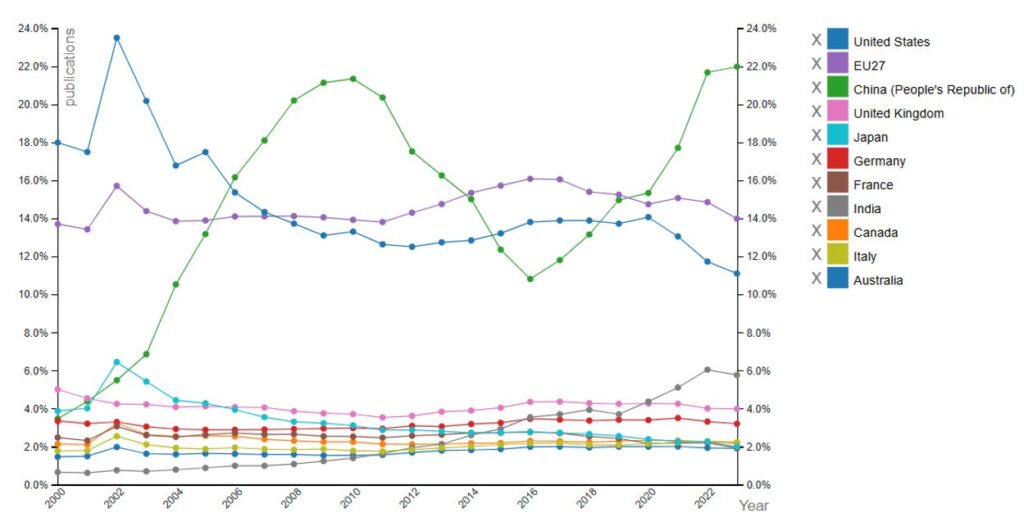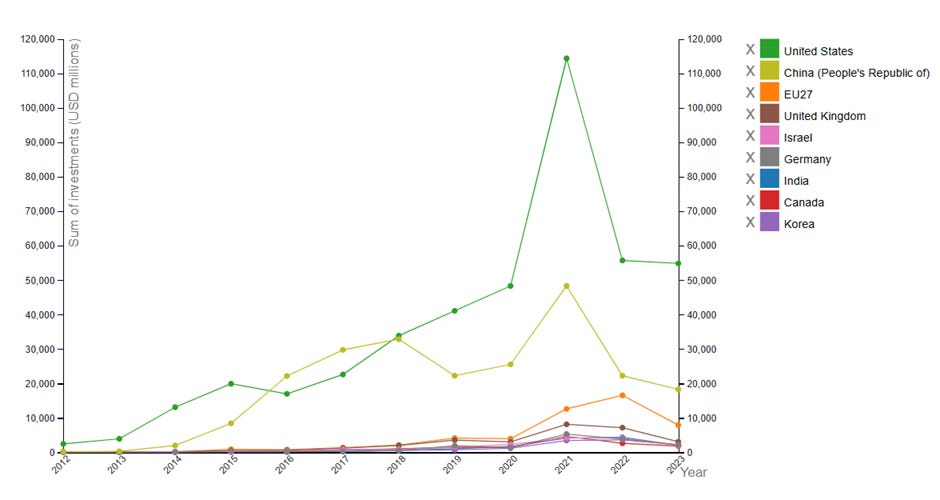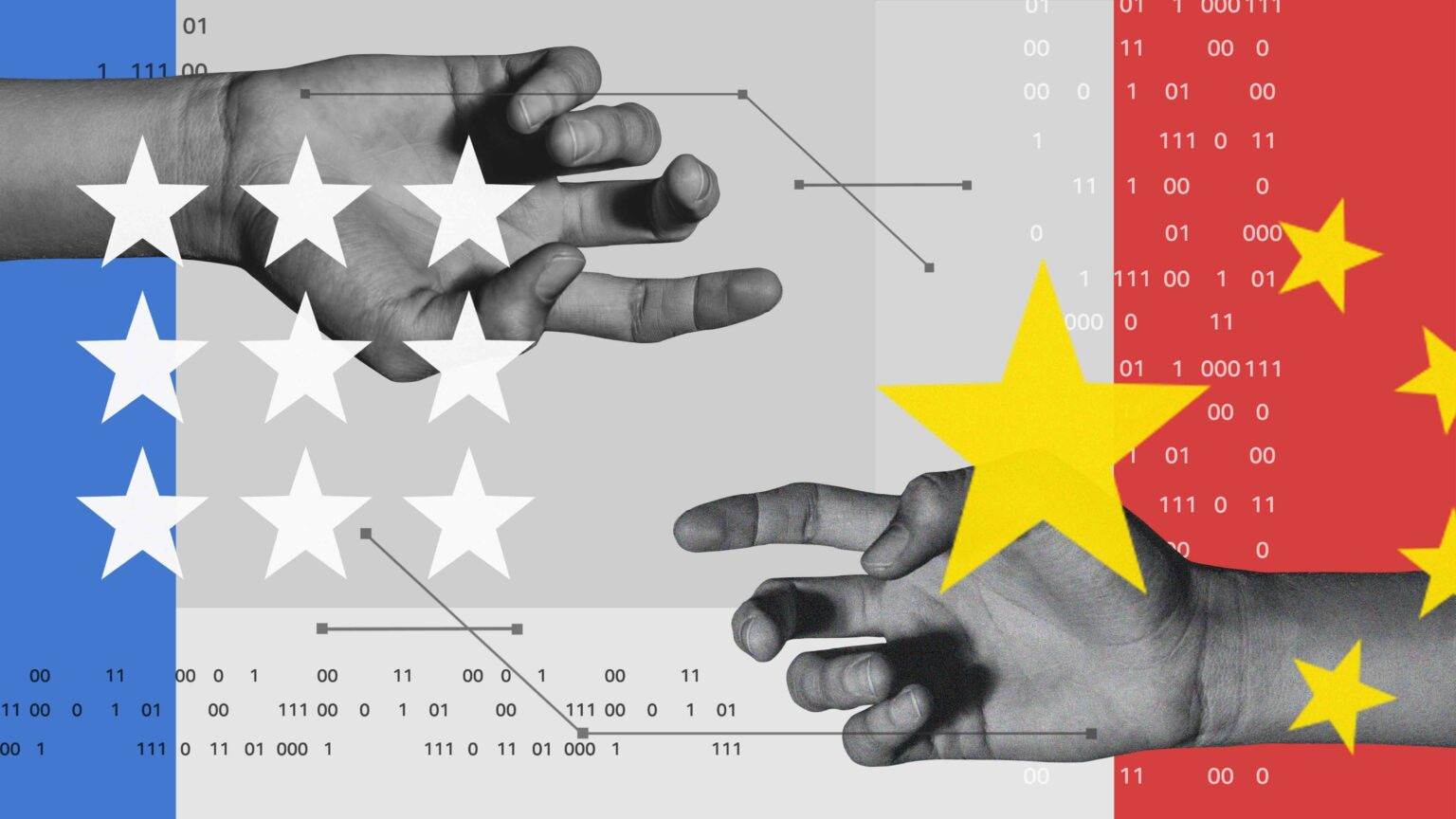On July 2,2024 – Bloomberg headline reads as “UN General Assembly Adopts China-Backed Resolution on AI” with first paragraph emphasizing that as “The United Nations General Assembly adopted a China-led resolution meant to help poor nations benefit from artificial intelligence, the latest in a tug of war between Beijing and Washington for AI supremacy on the global stage.” Reuters published on the same day with a headline “China says US targeting of AI not helpful to healthy development” with a quote (July 01,2024) from China’s U.N. envoy to the U.N. “U.S. targeting of certain investments in artificial intelligence in China is not helpful to the “healthy development” of AI technology and will be divisive when it comes to global governance.”
Based on the narratives produced by both countries regarding AI development, the competition between the two is becoming more visible. Meanwhile, on June 21, 2024, the United States announced proposed guidelines prohibiting or requiring notification or monitoring of investments in China on artificial intelligence and other technology areas such as computer chips and quantum computing that could jeopardize US national security. According to the report, China strongly opposes any limits or sanctions since they will split the world in terms of norms and AI governance. China advocates for a fair, open, inclusive, and nondiscriminatory economic environment, and feels that the United States’ actions are not a positive development for AI technology in general (AP, July 3, 2024).
Why is there a battle for AI Supremacy?
While there may be some contention, it is possible to argue that there is no U.S.-China battle for AI supremacy by presenting various facts as evidence, examining the trend scenario shows otherwise – as tendencies of competition between the countries are plainly obvious. China, for example, has launched plans and expressed aspirations/intentions to become the world’s AI leader by 2030, and the U.S. has established programs to foster AI innovation while protecting national security.
A Chinese Foreign Ministry spokeswoman stated on Tuesday, July 2, 2024 (CCTV), that “China is willing to deepen cooperation in the artificial intelligence (AI) field with the United States” in response to the unanimous adoption of a China-proposed resolution on international cooperation in AI capacity building by the United Nations General Assembly. The idea of the United States extending cooperation with China on AI may not be completely realized due to different political pressures against deepening cooperation with China. Fast forwarding through many observations, there is undoubtedly a battle for AI supremacy as the U.S.-China artificial intelligence rivalry and competition is a battle for global dominance, as both China and the U.S. recognize the strategic importance of artificial intelligence and are investing heavily in R&D to maintain a competitive edge.
Current U.S. and China’s standing on AI
To assess the AI rivalry situation between the two countries and where they are headed, two important factors to consider are 1) AI research and 2) venture capital investment in AI.
AI Research: In the early 2000s, the U.S. published the most AI-related papers worldwide (See Chart 1 below). It is certainly too early to determine whether the United States or China leads in the quality application of AI. Nevertheless, one thing is certain: when it comes to AI research output, the research will not be stagnant, nor it will remain static. This was the case in 2006 when China surpassed the U.S. in AI research publications with 58,067 AI articles in China compared to the 52,671 AI articles in the U.S. Naturally, there are arguments that even if a large volume of papers is published by Chinese researchers in China, it does not necessarily mean those are quality research. However, Chinese researchers have grown even more productive, with 155,487 AI articles published in 2022, compared to 81,130 articles published by US researchers. Despite the fact that China’s technology industry was still emerging in the 2010s, the Chinese accounted for approximately 40% of worldwide AI publications in 2021, indicating a good trend. By 2021, China had 7,401 of the most-cited articles, which was 70% greater than the number of publications cited in the United States. Although American technology continues to dominate AI research, Chinese companies are gaining ground.

Venture Capital Investment in AI: The U.S. continues to dominate in drawing venture capital investment in AI and data businesses, with a significant growth between 2020 and 2021 (See Chart 2 below). During the same period, China saw a similar trend to that in the U.S., but in 2022 there was a sharp decline in 2022 in both countries. Charts 3 shows where both the U.S. and China have been investing.


Conclusion Observation: The battle for AI supremacy between the two countries will undoubtedly disrupt global standards and collaboration as both want to be AI leaders, and the battle has the potential to increase rivalry indefinitely. As a result, if the U.S. and China are unable to collaborate, both will push for different standards, resulting in fragmentation and interoperability concerns, thereby splitting the AI globe into two big blocs.
About the Author: Augustine R. is an independent analyst and researcher specializing in international relations and geopolitical affairs. With a background in international relations, trade, and development, his interests span global security and economic diplomacy. He closely examines the Bangladesh-China-India-Myanmar (BCIM) strategic nexus and the evolving foreign policy dynamics within the U.S.-China-India relationship triangle. Click here to view all articles by the author.
Featured Image: U.S. vs. China: The Battle for Global AI Supremacy / HBR Staff/Unsplash

